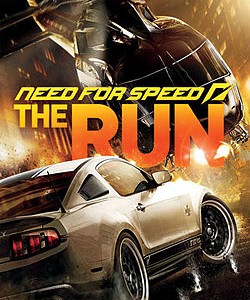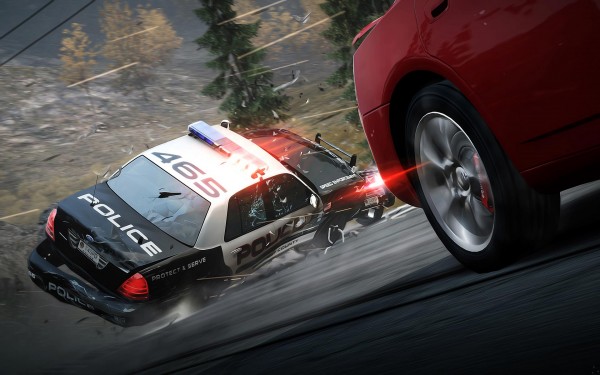Early on, there was a moment in Need for Speed: The Run that lined up perfectly. As I cut turns and broke my car in, traffic twirling around me, the Midwest landscape yawned to the horizon; my radio crackled “On the Road Again” by Canned Heat. This easing rush of Americana was eventually truncated, though, as The Run’s unabashed momentum often stumbled from numerous trials and memorized errors.
With an abundance of stats, maps and other information splayed across every onerous load screen, EA Black Box constantly tries to make The Run be and do more than it can. This includes but is not limited to the usual bromides of an exhausted fast-car genre: expect trash compactors, bridge jumps over traffic, and narrative logic that suggests the “Mob” will throw car after gun after helicopter at someone who is racing across the country to pay them back.
In an effort to liven things up, like your parents trying to get the family to sing a song during road trips, we eventually get to control – err, partially push – Jack outside the comfort of a car. In escaping police and those rascally mobsters, players are stuck guiding Jack through a series of quick-time events. Trite, for sure, but there was one particular moment with a railroad track and an upside-down car that refreshed such a worn-in gameplay card.
These sections are smartly used with brevity as the true beauty comes from behind the wheel, where the game should have stayed for its entirety. The Run doesn’t put you through driving lessons, which is perfect for a game that escalates so rapidly. Lofty cut scenes meld into the races, leaving players little time to divert their eyes and attention. Weaving through cars, committing to shortcuts and cleanly passing other racers all elicits uneasy lurches toward the television. My legs wouldn’t let me sit. I’d yelp at the prospect of such pristine execution. I’ll admit it.
Gain comes through destruction. Hugging corners. Brushing past other vehicles. I’d accelerate into a turn, clipping pestering police and sending them sailing. The Run then gives time to appreciate. The camera bobs and focuses on the blue and red lights, like sparks, careening to a fiery heap. It’s distracting, but the effect had me enamored with deep, monotonic coos. Driving like this, in a way that hypnotized and influenced affliction on my own ’91 Corolla, is also awarded with experience points for car enhancements and unlocking vehicles.
These gifts add to the collection, but the collection is lost when The Run is coming to a finish. By the end, locales recycle and races are beaten by memorization. The organic reactionary chemistry that resulted in won races become crumbled body frames on the side of the Maryland highway. Races don’t challenge in the final stages, they trick. The five resets given at the start of each race to redo erred calls, once seemingly abundant, begin to feel preciously limited. The Run offers little incentive to return. Those 3,000 miles suddenly start feeling like highway hypnosis.
The Run has perpetual tunnel vision: too blind to see its restricting nature and too focused to care even if it could. The opening strokes of tearing velocity and lush American landscapes are inviting, but only carry so much weight. Like the outlandish journey tasked to our hero, the game screams out of the gate only to lose interest from fatigue by the end. When the east coast finally meanders into view, The Run just wants to stop for a bathroom break and some Sbarro pizza.



















